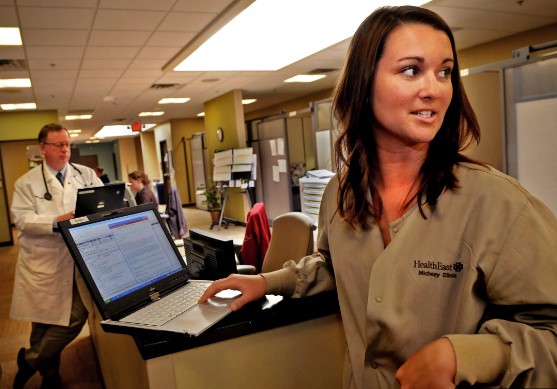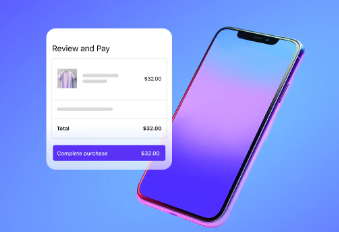In today’s fast-paced era, the role of remote medical scribes is becoming increasingly crucial in the healthcare sector. These professionals streamline documentation processes and enable healthcare providers to prioritize patient care. This article delves into medical scribing, covering its importance, functions, benefits, challenges, and prospects in the medical field.
Exploring Remote Medical Scribing
What Defines a Remote Medical Scribe?
A remote medical scribe or virtual medical scribe is an individual who supports healthcare professionals by documenting patient interactions in time from a distant location. They record patient histories, symptoms, diagnoses, and treatment strategies in electronic health records (EHRs).
Significance in Modern Healthcare
The significance of scribes cannot be overstated. With healthcare providers facing escalating demands, precise and efficient documentation has become indispensable. By easing the workload, remote medical scribes enable healthcare practitioners to dedicate time to delivering quality patient care.
The Responsibilities of Remote Medical Scribes
Medical scribes must capture thorough and accurate patient data.
They observe healthcare providers during consultations, taking notes and ensuring that all pertinent clinical information is accurately documented.
Advantages for Healthcare Professionals
Remote scribes offer benefits to healthcare professionals. They help reduce the time spent on documentation, minimize errors, and enhance efficiency, enabling doctors and nurses to focus on providing top-notch patient care.
Improving Work-Life Balance
By handling documentation tasks, remote medical scribes contribute to a balanced work-life dynamic for healthcare providers. This not only decreases burnout but also boosts job satisfaction among medical personnel.
Challenges in Remote Medical Scribing
Technological Hurdles
One of the obstacles encountered by medical scribes is technology usage. Like any system, technical issues can impede or disrupt the documentation process, resulting in delays and inaccuracies.
Concerns About Data Security
Remote scribing involves transmitting patient data over digital platforms. This raises worries about data security and privacy since any breach could affect patients and healthcare practitioners.
Communication Challenges
Medical scribes collaborate closely with healthcare professionals in a setup that makes communication seamless. However, when working remotely, it can be challenging to establish lines of communication, leading to misunderstandings and delays in documenting information.
Ways to Address Challenges
Comprehensive Training and Assistance
To overcome obstacles, remote medical scribes should receive training on using digital platforms and software. They should also have access to support for any issues that may arise, ensuring efficient documentation processes.
Strong Data Security Measures
Healthcare organizations should implement data encryption methods and strictly adhere to HIPAA regulations to address data security concerns. Regular system updates and audits can help identify vulnerabilities and prevent breaches.
Effective Communication Channels
Establishing communication is essential for a remote medical scribing process. Healthcare organizations must develop communication channels between medical scribes and providers, such as video conferencing tools and secure messaging platforms.
How Remote Medical Scribing Operates
Technology and Resources
Remote medical scribing involves technology and secure communication channels. Scribes utilize software to connect with healthcare providers during visits, ensuring seamless documentation.
Read also: Talking with Tommy DiDario: Exploring Travel, Style, Health, Fitness, Grooming, and Thoughts
Communication Methods
Effective communication plays a role in medical scribing. Scribes and healthcare providers maintain connections through video calls, messaging applications, and other HIPAA-compliant platforms for exchanging information.
Integration with Electronic Health Record (EHR) Systems
DocVA Remote assistants seamlessly blend in with health record (EHR) systems. They are trained to navigate EHR platforms, ensuring patient information is accurately and promptly inputted into the system. This allows healthcare providers to quickly access data, enhancing the quality and efficiency of care.
The Future of Remote Medical Assistance
The growth of assistance is expected to continue in the healthcare sector. With advancements, remote assistants will likely have access to sophisticated tools and software, further improving their work efficiency.
Potential Impact on Healthcare Sector
The introduction of assistants has the potential to transform the healthcare sector. Easing burdens on healthcare professionals can enhance efficiency and overall patient care quality. Additionally, it may lead to cost reductions for healthcare organizations.
Benefits of Remote Medical Assistance
Enhanced Efficiency
An advantage of medical assistance is the improved efficiency in healthcare documentation. Assistants handle some tasks, allowing healthcare providers to concentrate on delivering patient care.
Increased Accuracy
Accurate documentation is crucial in healthcare settings. Remote medical assistants ensure record maintenance, reducing the likelihood of errors and elevating care quality.
Cost Effective Solution
The use of scribes proves cost-effective for healthcare facilities. It reduces the necessity for in-house staff, resulting in substantial cost savings while maintaining documentation quality.
Addressing Privacy Concerns in Remote Medical Scribing
Privacy and security are aspects of medical scribing. To tackle these concerns, scribes employ HIPAA tools and adhere to strict protocols to safeguard patient data confidentiality and integrity.
Dealing with Challenges
Although technology is vital in medical scribing, it may sometimes present obstacles. Continuous training and updates on the software and tools can assist scribes in overcoming these challenges and carrying out their responsibilities efficiently.
Ensuring Training and Competency
Adequate training is critical for scribes. Ongoing education and competency evaluations guarantee that scribes are up to date with terminologies, documentation standards, and EHR systems.
Looking Ahead: The Future of Remote Medical Scribing
Promising Developments
Emerging trends, like integrating telemedicine and utilizing documentation tools, promise to boost the efficiency and effectiveness of remote medical scribing.
Transforming Healthcare Delivery
Remote medical scribing is poised to transform healthcare delivery. By making documentation processes more efficient and enhancing patient care will have an impact on shaping the future of healthcare.
Potential for Expansion
The demand for scribes is projected to increase substantially. As healthcare professionals seek ways to handle documentation, the role of remote medical scribes will become increasingly vital.
Wrap up
Remote medical scribing offers advantages for healthcare practitioners, such as increased efficiency, improved accuracy, and cost savings. By recognizing its importance and utilizing its benefits, healthcare providers can deliver patient care and cultivate a more efficient work environment.
If you’re a healthcare professional looking to streamline documentation processes and improve care, consider incorporating remote medical scribing into your practice. The future of healthcare is already here. It’s time to embrace this change.
Achieve top search rankings with specialized medical search engine optimization from SEOEchelon.com. Learn more now!





